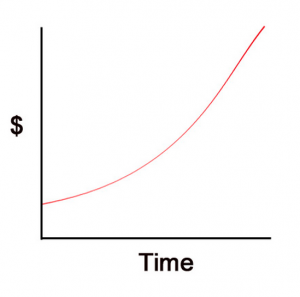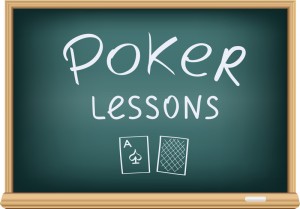Terry Wynn, aka Darvon from the Forum, takes a look at how Poker Tracker can improve your play
If you are a Newbie to Texas Hold’em poker, let’s say starting anytime from last Tuesday to six months ago, you want to know how you are doing today and how much better you are tomorrow in Texas Hold’em poker – in other words, how do you track your progress as a Texas Hold’em poker player? I am a Newbie to Texas Hold’em poker myself (Iv’e been playing Texas Hold’em poker about 3 months now) and as I have read the books about Texas Hold’em poker and browsed the web sites I have found some help and some naysayers. First, the help.
Statistics On Your Poker Playing
There are multiple software packages for tracking your poker game, but there is ONE that is an Internet consensus – PokerTracker. The way PokerTracker (www.pokertracker.com) works is that it reads the “hand histories” that most poker sites will send to you by email.
In the following paragraphs I am going to start tossing around numeric goals, like VP$IP of 17.5%. These numbers are VERY approximate and are for Newbies to low-limit Texas Hold’em poker. The optimal numbers will also vary by the type of game you play and the type of poker opponents you face, but I believe these numeric goals will serve you well as “Rules of Thumb” in Texas Hold’em poker and can point out leaks in Texas Hold’em poker at the Newbie-level. So just go with the flow…
PokerTracker gives you about 1.47 gadzillion stats to analyze your Texas Hold’em poker playing. We, as Newbies to Texas Hold’em poker will use 5 of them. The first is VP$IP. That stands for Voluntarily Put $ In Pre-Flop, i.e. did you bet (not counting the Big Blind) or call a bet in Pre-Flop?
As you probably have found out by now, the first rule of Texas Hold’em poker is “Fold bad hands before the Flop.” The thing which is different about Texas Hold’em poker is that most hands don’t require an Ante, so you must take advantage of this fact in Texas Hold’em poker by folding when you see bad (or even tepid) hole cards. A good player of Texas Hold’em poker has about a 17.5% VP$IP (in other words, they bet, or call a bet, before the flop about 17.5%). What is yours? Beginners have this number WAY HIGH, sometimes over 50%. Bring down your VP$IP by using a system like the starting hand chart in Matthew Hilger’s Internet Texas Hold’em poker book. And use a lot of discipline. Don’t ask me where to get discipline. The last time I Google’d for it, I got in a lot of trouble with my wife.
As you start to tighten up your game Pre-Flop poker playing, you should start increasing the number of times you win if you see the flop. That percentage is shown in W$WSF, (Won $ When Saw Flop), and should be about 35% for good Texas Hold’em poker players. The next stat we will use is PFR%, Pre-Flop Raising %. It will probably be low for newbies Texas Hold’em poker and should be about 7.5% for a good Texas Hold’em poker player.
After you tune your Pre-Flop poker playing, you want to start reading the chapters in all of your Texas Hold’em poker books which talk about Texas Hold’em poker playing on the Flop, Turn and River. Again, the primary objective (and the hardest for Newbies) is folding weaker hands. As you do this, you will only arrive at Showdown with pretty good cards and so your W$SD, Win $ at Show Down, will start to increase,with good Texas Hold’em poker players on the high side of 50%.
Finally, the ultimate measure is “how much did you win?”. This is measured in BB/100 or Big Bets won Per 100 hands. A “Big Bet” is the amount of each raise in the last 2 rounds of a limit Texas Hold’em poker game,i.e. in a $1/$2 game the BB is $2. A good Texas Hold’em poker player wins at a rate of 1.5-2BB/100.
Putting Telescopic Sights on a Shotgun
OK. Now here come the naysayers. They will weep and wail “Statistical Variance” or “Good Card Run” if they went to a state college. And they are right. In Texas Hold’em poker you get runs of good cards and runs of bad cards, whose effect will swamp the details we are trying to observe. The elite Texas Hold’em poker player will say that without a history of at least 10,000 – 20,000 hands all the data is statistically insignificant, that a run of good cards could mask bad play, which is true. But they will also say that a beginner’s game in Texas Hold’em poker should not be measured without averaging at least 10,000 hands, which is silly since after 10,000 hands you won’t be a beginner anymore. The usual Newbie plays Texas Hold’em poker about 5-10 hrs/week at about 50-100 hands per hour. So 10,000 hands is about 20 weeks or 5 months of continuous play. That’s a lot of Texas Hold’em poker and WAY too long to wait for some feedback.
So how can you get some early feedback on your Texas Hold’em poker game? Here is what I did. When I play a hand in Texas Hold’em poker and load the hand history into Poker Tracker, I also get stats for all the other people sitting at the table. Over hundreds of hands this gives me a profile on a LOT of other Texas Hold’em poker players that play at the low level/beginner poker games. I also asked a few other people to send me their Poker Tracker data. All told I have stats of about 4,300 people, and about 120,000 hands. I then ranked them by our 5 beginner-stats. The table below shows the percentile brackets for each of the 5 stats. By the dictionary: “A percentile is the one of 99 values of a variable dividing its distribution into 100 groups with equal frequencies; the 90th percentile is the value of a variable such that 90% of the relevant population is below that value.” In layman’s terms the 90th percentile is the score where 90% of the people are at the same or lower score and so on for other percentiles.
The50th percentile shows the score of the “average player” of our group.
|
PERCENTILE |
ABS(VP$IP – 17-5%) |
W$WSF |
ABS(PFR%-7.5%) |
W$SD |
BB/100 |
|
|
90 |
4.7% |
50.0% |
1.6% |
100.0% |
66.7 |
|
|
70 |
15.8% |
30.8% |
5.4% |
50.0% |
11.8 |
|
|
50 |
24.2% |
22.2% |
7.5% |
37.5% |
(10.0) |
|
|
30 |
37.5% |
13.3% |
7.5% |
0.0% |
(35.7) |
|
|
10 |
57.5% |
0.0% |
7.5% |
0.0% |
(90.0) |
|
ABS(VP$IP – 17-5%) – Take your VP$IP and see how far it is away from the goal of 17.5%. The median beginning Texas Hold’em poker player is still 24.2% away or 41.7%. Pull this number down to see primary improvement in your game. ABS stands for “Absolute Value” which is the distance away from zero. ABS(1)=ABS(-1)=1
W$WSF – The goal of 35% is only seen by the 80th percentile or better of all Texas Hold’em poker players.
ABS(PFR%-7.5%)– How far is your PFR% away from 7.5%. More than half the Texas Hold’em poker beginners have a PFR% of 0. Once you tighten your play, get a little aggressive with the premium hands you still hold.
W$SD – Only the top 30 percentile of Texas Hold’em poker beginners win as many as they lose at Show Down. Tighten up that post-flop play, Newbies. Folding is your friend.
BB/100 – 62ndpercentile or lower LOSE MONEY in our sample. If you improve, you can go fishing. The high BB/100 rates at the top of our charts are caused by runs of good cards, which would be damped down by more hands.
So, where do you rank? Write it down and then come back next month and see if you can improve your Texas Hold’em poker game. Texas Hold’em poker is a hobby of constant learning for Newbies. Learn, grow, maybe even win a couple of bucks…
Submit your review | |






